Influence of Hydrophobic Fin Configuration in Thermal System in Relation to Electronic Device Cooling Applications
Abstract
:1. Introduction
2. Heating and Flow Analysis
2.1. Governing Equations
2.2. Boundary Conditions
2.3. Numerical Implementation
2.4. Mesh Generation
2.5. Thermo-Physical Properties
2.6. Model Validation
3. Results and Discussion
4. Conclusions
Author Contributions
Funding
Acknowledgments
Conflicts of Interest
Nomenclature
| c | Specific heat (J/kgK) |
| CP | Pressure loss factor |
| g | Gravity (m/s2) |
| k | Thermal conductivity (W/mK) |
| Ls | Slip length (m) |
| LT | Thermal resistance length (m) |
| n | Fin count |
| Nu | Nusselt number |
| P | Pressure (kPa) |
| Pr | Prandtl number |
| Re | Reynold number |
| T | Temperature (K) |
| Ts | Liquid temperature at wall interface (K) |
| Tw | Solid wall temperature at interface (K) |
| Vs | Slip velocity (m/s) |
| ∂u/∂n | Rate of fluid strain on slip surface (1/s) |
| V | Velocity vector (m/s) |
| Greek letters | |
| ε | Strain rate tensor (1/s) |
| β | Volumetric thermal expansion coefficient (1/K) |
| μ | Viscosity (Pa.s) |
| ϕ | Temperature parameter |
| Φ | Viscous dissipation (1/s2) |
| ρ | Density (kg/m3) |
| Subscripts | |
| max | maximum |
| min | minimum |
| ref | reference |
References
- Qian, M.; Li, J.; Xiang, Z.; Yan, C.; Hu, X. Effect of Pin Diameter Degressive Gradient on Heat Transfer in a Microreactor with Non-Uniform Pin-Fin Array under Low Reynolds Number Conditions. Energies 2019, 12, 2702. [Google Scholar] [CrossRef] [Green Version]
- Shyu, J.-C.; Chang, T.; Lee, S.-C. A Numerical Study on Natural Convection Heat Transfer of Handheld Projectors with a Fin Array. Energies 2017, 10, 266. [Google Scholar] [CrossRef] [Green Version]
- Tijani, A.S.; Jaffri, N.B. Thermal analysis of perforated pin-fins heat sink under forced convection condition. Procedia Manuf. 2018, 24, 290–298. [Google Scholar] [CrossRef]
- Li, D.; Yang, C.; Yang, H. Experimental and numerical study of a tube-fin cool storage heat exchanger. Appl. Therm. Eng. 2019, 149, 712–722. [Google Scholar] [CrossRef]
- Shaalan, M.R.; Saleh, M.A.; Mesalhy, O.; Elsayed, M.L. Thermo/fluid performance of a shielded heat sink. Int. J. Therm. Sci. 2012, 60, 171–181. [Google Scholar] [CrossRef]
- Chang, S.W.; Su, L.M.; Yang, T.L.; Chiou, S.F. Enhanced heat transfer of forced convective fin flow with transverse ribs. Int. J. Therm. Sci. 2004, 43, 185–200. [Google Scholar] [CrossRef]
- Hajmohammadi, M.; Ahmadian, M.; Nourazar, S. Introducing highly conductive materials into a fin for heat transfer enhancement. Int. J. Mech. Sci. 2019, 150, 420–426. [Google Scholar] [CrossRef]
- Tu, J.; Yuen, W.; Gong, Y. An Assessment of Direct Chip Cooling Enhancement Using Pin Fins. Heat Transf. Eng. 2012, 33, 845–852. [Google Scholar] [CrossRef]
- Reddy, S.; Abdoli, A.; Dulikravich, G.S.; Pacheco, C.C.; Vasquez, G.; Jha, R.; Colaço, M.J.; Orlande, H.R.B. Multi-Objective Optimization of Micro Pin-Fin Arrays for Cooling of High Heat Flux Electronics with a Hot Spot. Heat Transf. Eng. 2016, 38, 1235–1246. [Google Scholar] [CrossRef]
- Duan, L.; Liu, B.; Qi, B.; Zhang, Y.; Wei, J. Pool boiling heat transfer on silicon chips with non-uniform micro-pillars. Int. J. Heat Mass Transf. 2020, 151, 119456. [Google Scholar] [CrossRef]
- So, H.; Pisano, A.P. Self-Transport of Condensed Liquid in Micro Cooling Device Using Distributed Meniscus Pumping. Langmuir 2015, 31, 6588–6594. [Google Scholar] [CrossRef] [PubMed]
- Oguntala, G.; Abd-Alhameed, R.; Sobamowo, G.M.; Abdullahi, H.-S. Improved thermal management of computer microprocessors using cylindrical-coordinate micro-fin heat sink with artificial surface roughness. Eng. Sci. Technol. Int. J. 2018, 21, 736–744. [Google Scholar] [CrossRef]
- Ganesan, P.B.; Vanaki, S.M.; Thoo, K.; Chin, W. Air-side heat transfer characteristics of hydrophobic and super-hydrophobic fin surfaces in heat exchangers: A review. Int. Commun. Heat Mass Transf. 2016, 74, 27–35. [Google Scholar] [CrossRef]
- Guan, N.; Jiang, G.; Liu, Z.; Zhang, C.; Liang, X. The impact of contact angle on flow resistance reduction in hydrophobic micro pin fins. Exp. Therm. Fluid Sci. 2016, 77, 197–211. [Google Scholar] [CrossRef] [Green Version]
- Wang, F.; Liang, C.; Yang, M.; Zhang, X. Effects of surface characteristics on liquid behaviors on fin surfaces during frosting and defrosting processes. Exp. Therm. Fluid Sci. 2015, 61, 113–120. [Google Scholar] [CrossRef]
- Liang, C.; Wang, F.; Lu, Y.; Yang, M.; Zhang, X. Experimental and theoretical study of frost melting water retention on fin surfaces with different surface characteristics. Exp. Therm. Fluid Sci. 2016, 71, 70–76. [Google Scholar] [CrossRef]
- Rahimi, M.; Afshari, A.; Fojan, P.; Gurevich, L. The effect of surface modification on initial ice formation on aluminum surfaces. Appl. Surf. Sci. 2015, 355, 327–333. [Google Scholar] [CrossRef]
- Yang, Y.; Zhuang, D.; Ding, G. Effect of surface wettability of fins on dust removal by condensate water. Int. J. Heat Mass Transf. 2019, 130, 1260–1271. [Google Scholar] [CrossRef]
- Leslie, G.; Schneider, R.; Fane, A.; Marshall, K.; Fell, C. Fouling of a microfiltration membrane by two Gram-negative bacteria. In Colloids in the Aquatic Environment; Elsevier: London, UK, 1993; pp. 165–178. [Google Scholar]
- Sun, C.; Feng, X. Enhancing the performance of PVDF membranes by hydrophilic surface modification via amine treatment. Sep. Purif. Technol. 2017, 185, 94–102. [Google Scholar] [CrossRef]
- Wang, K.; Hou, D.; Wang, J.; Wang, Z.; Tian, B.; Liang, P. Hydrophilic surface coating on hydrophobic PTFE membrane for robust anti-oil-fouling membrane distillation. Appl. Surf. Sci. 2018, 450, 57–65. [Google Scholar] [CrossRef]
- Wang, Z.; Lin, S. The impact of low-surface-energy functional groups on oil fouling resistance in membrane distillation. J. Membr. Sci. 2017, 527, 68–77. [Google Scholar] [CrossRef]
- Edalatpour, M.; Liu, L.; Jacobi, A.; Eid, K.; Sommers, A. Managing water on heat transfer surfaces: A critical review of techniques to modify surface wettability for applications with condensation or evaporation. Appl. Energy 2018, 222, 967–992. [Google Scholar] [CrossRef]
- Guan, N.; Liu, Z.; Jiang, G.; Zhang, C.; Liang, X. Experimental and theoretical investigations on the flow resistance reduction and slip flow in super-hydrophobic micro tubes. Exp. Therm. Fluid Sci. 2015, 69, 45–57. [Google Scholar] [CrossRef]
- Dilip, D.; Kumar, S.V.; Bobji, M.S.; Govardhan, R.N. Sustained drag reduction and thermo-hydraulic performance enhancement in textured hydrophobic microchannels. Int. J. Heat Mass Transf. 2018, 119, 551–563. [Google Scholar] [CrossRef]
- Shen, C.; Zhang, C.; Bao, Y.; Wang, X.; Liu, Y.; Ren, L. Experimental investigation on enhancement of nucleate pool boiling heat transfer using hybrid wetting pillar surface at low heat fluxes. Int. J. Therm. Sci. 2018, 130, 47–58. [Google Scholar] [CrossRef]
- Ansari, D.; Husain, A.; Kim, K.-Y. Optimization and Comparative Study on Oblique- and Rectangular-Fin Microchannel Heat Sinks. J. Thermophys. Heat Transf. 2010, 24, 849–852. [Google Scholar] [CrossRef]
- Ahmed, H.E.; Salman, B.; Kherbeet, A.; Ahmed, M. Optimization of thermal design of heat sinks: A review. Int. J. Heat Mass Transf. 2018, 118, 129–153. [Google Scholar] [CrossRef]
- Lin, D.T.W.; Kang, C.-H.; Chen, S.-C. Optimization of the Micro Channel Heat Sink by Combing Genetic Algorithm with the Finite Element Method. Inventions 2018, 3, 32. [Google Scholar] [CrossRef] [Green Version]
- Kwak, D.-B.; Kwak, H.-P.; Noh, J.-H.; Yook, S.-J. Optimization of the radial heat sink with a concentric cylinder and triangular fins installed on a circular base. J. Mech. Sci. Technol. 2018, 32, 505–512. [Google Scholar] [CrossRef]
- Tullius, J.F.; Vajtai, R.; Bayazitoglu, Y. A Review of Cooling in Microchannels. Heat Transf. Eng. 2011, 32, 527–541. [Google Scholar] [CrossRef]
- Reddy, S.; Dulikravich, G.S. Inverse Design of Cooling Arrays of Micro Pin-Fins Subject to Specified Coolant Inlet Temperature and Hot Spot Temperature. Heat Transf. Eng. 2016, 38, 1147–1156. [Google Scholar] [CrossRef]
- Comsol Multiphysics. COMSOL INC. 2019. Available online: https://www.comsol.com/ (accessed on 10 February 2020).
- Ou, J.; Rothstein, J.P. Direct velocity measurements of the flow past drag-reducing ultrahydrophobic surfaces. Phys. Fluids 2005, 17, 103606. [Google Scholar] [CrossRef] [Green Version]
- Niu, Y.; Meka, A.; Yang, Y.; Yu, M.; Liu, Y.; Zhang, J.; Yu, C. Understanding the contribution of surface roughness and hydrophobic modification of silica nanoparticles to enhanced therapeutic protein delivery. J. Mater. Chem. B 2016, 4, 212–219. [Google Scholar] [CrossRef]
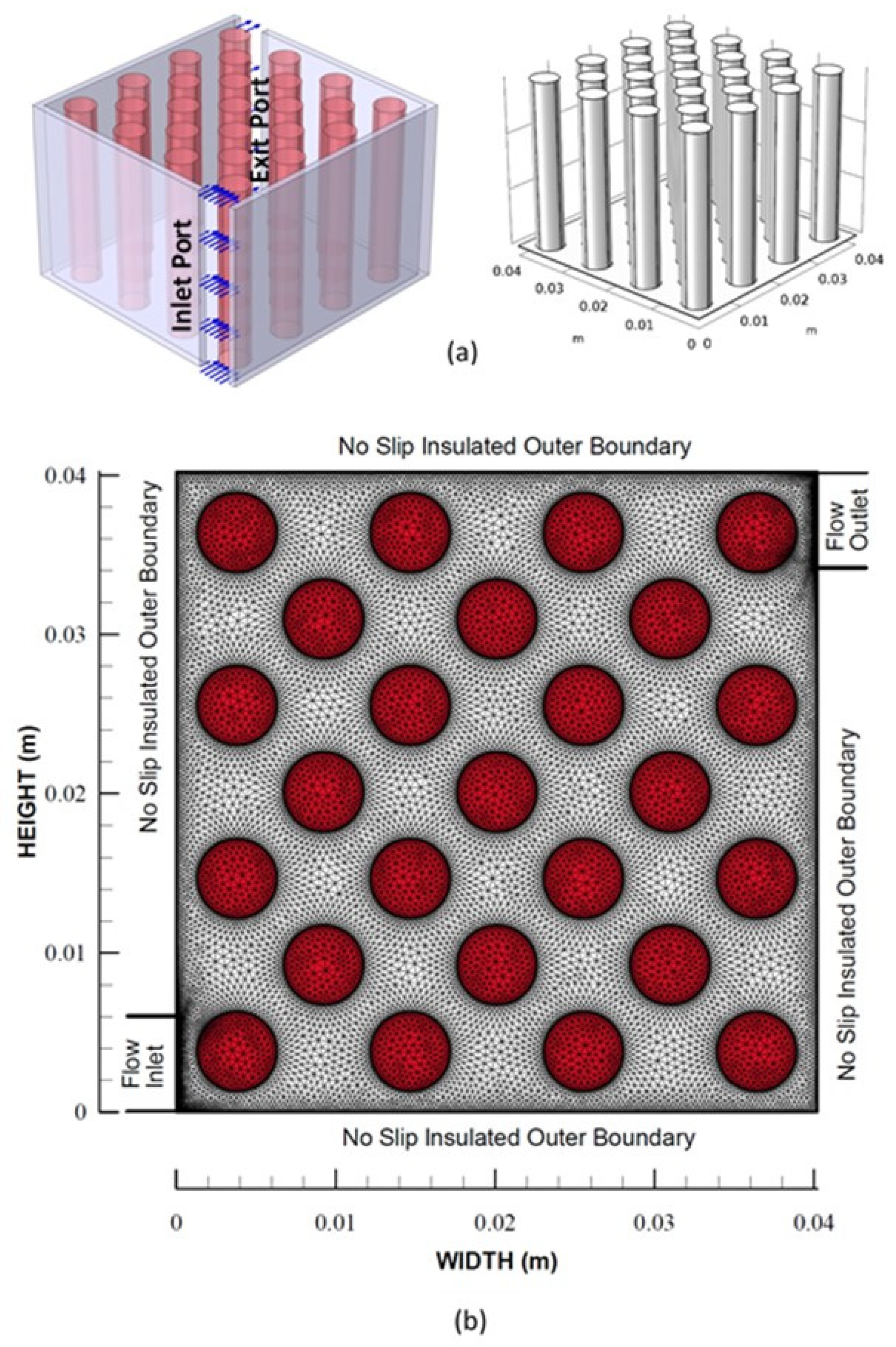
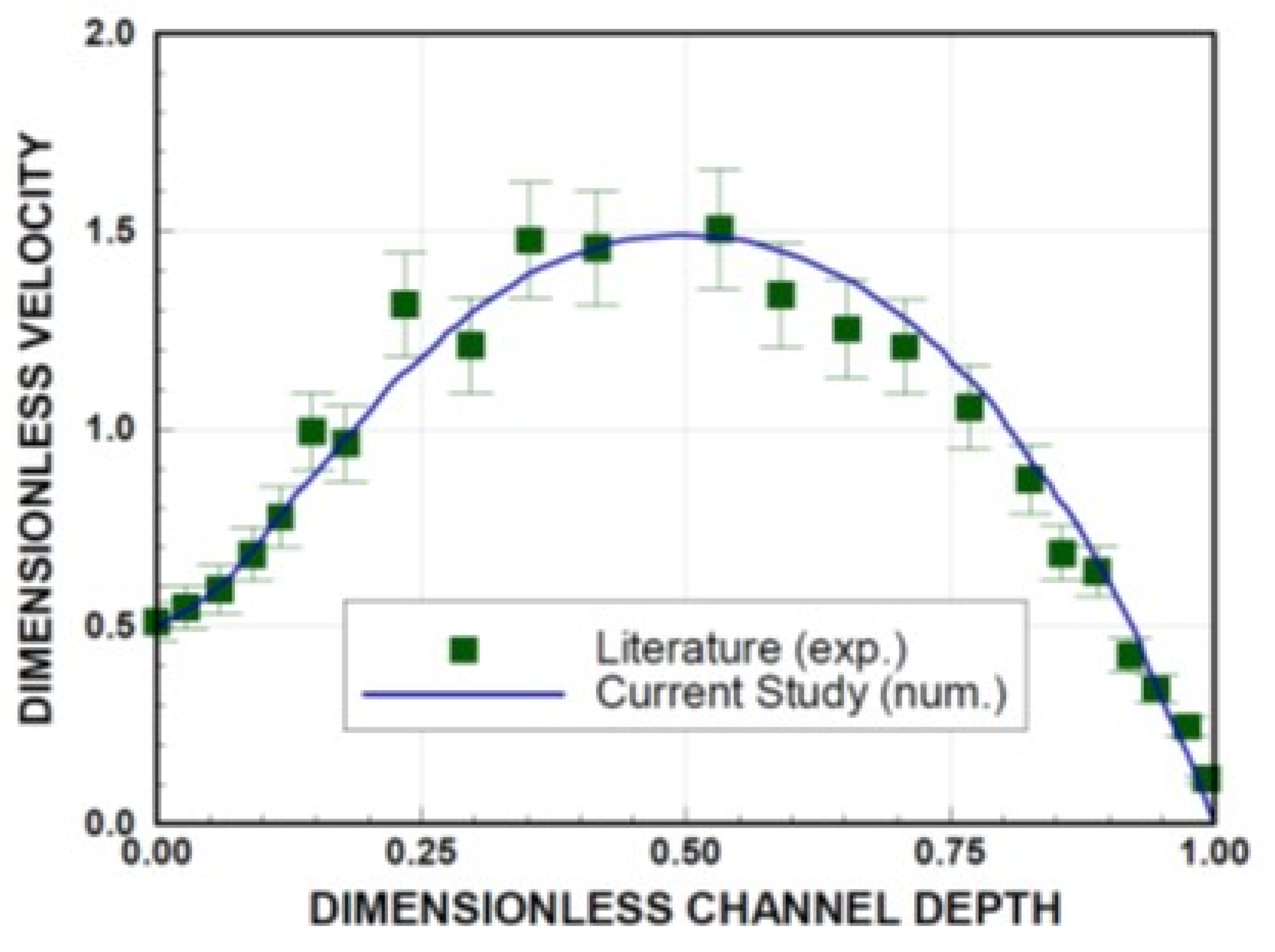
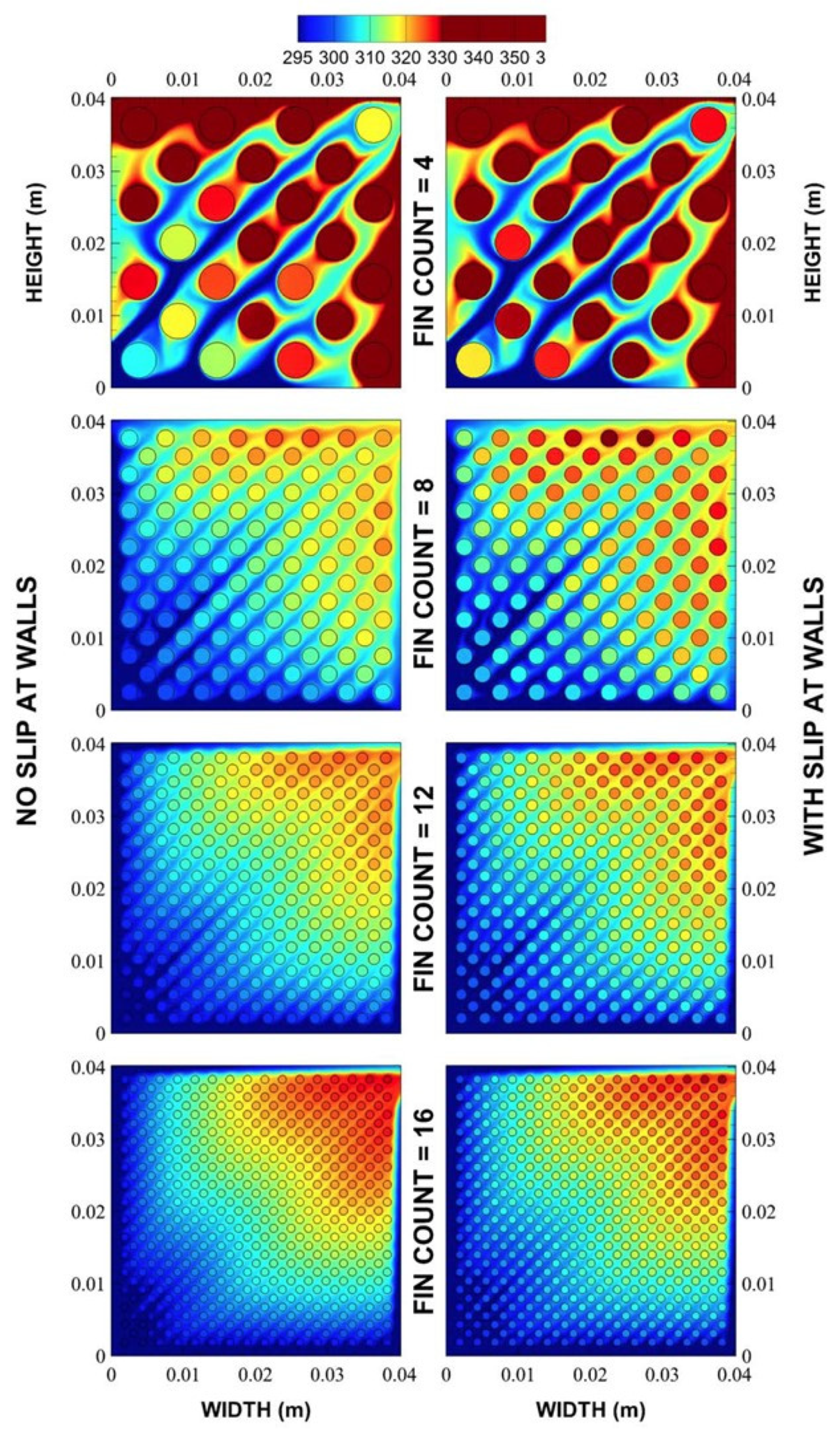
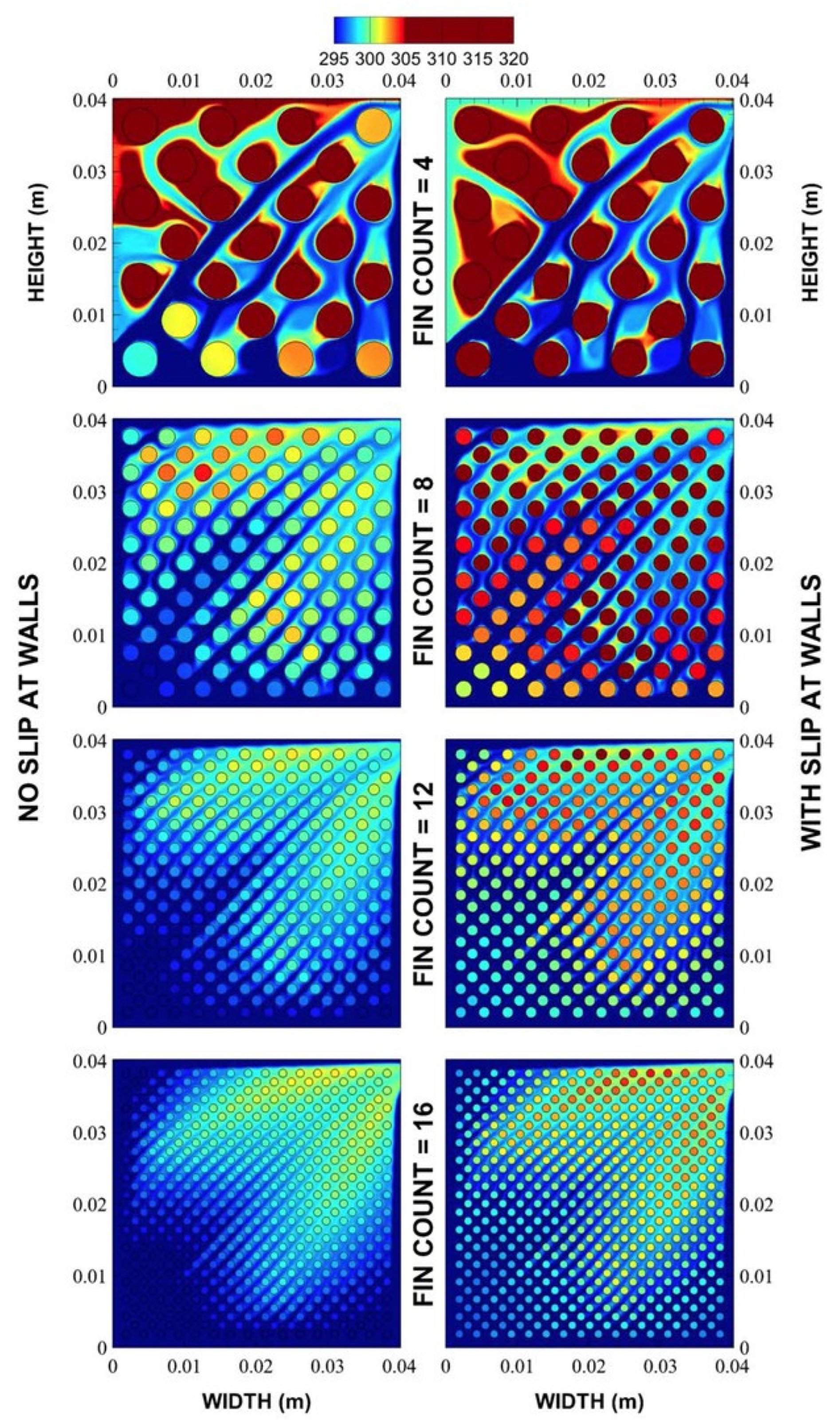

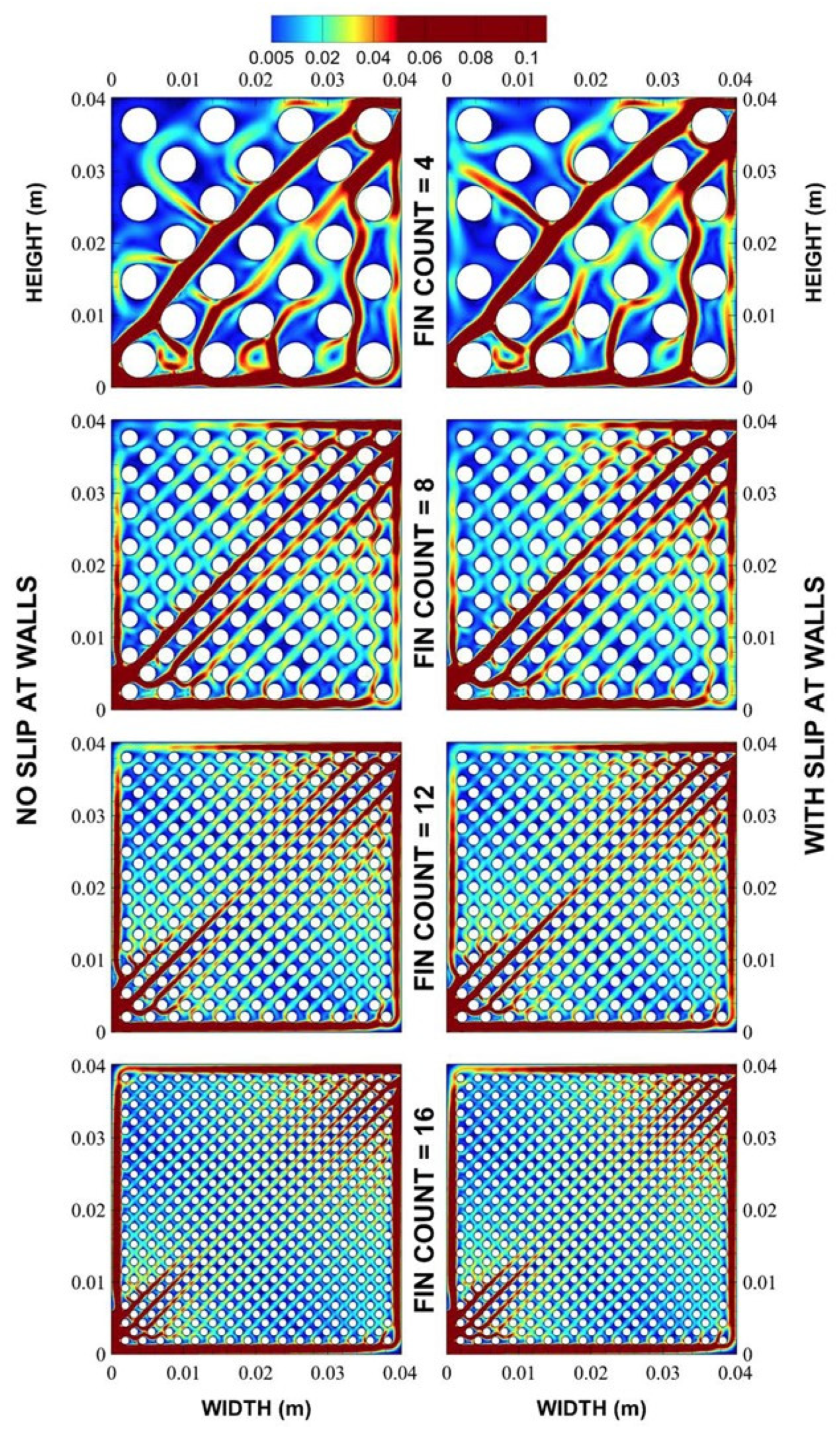

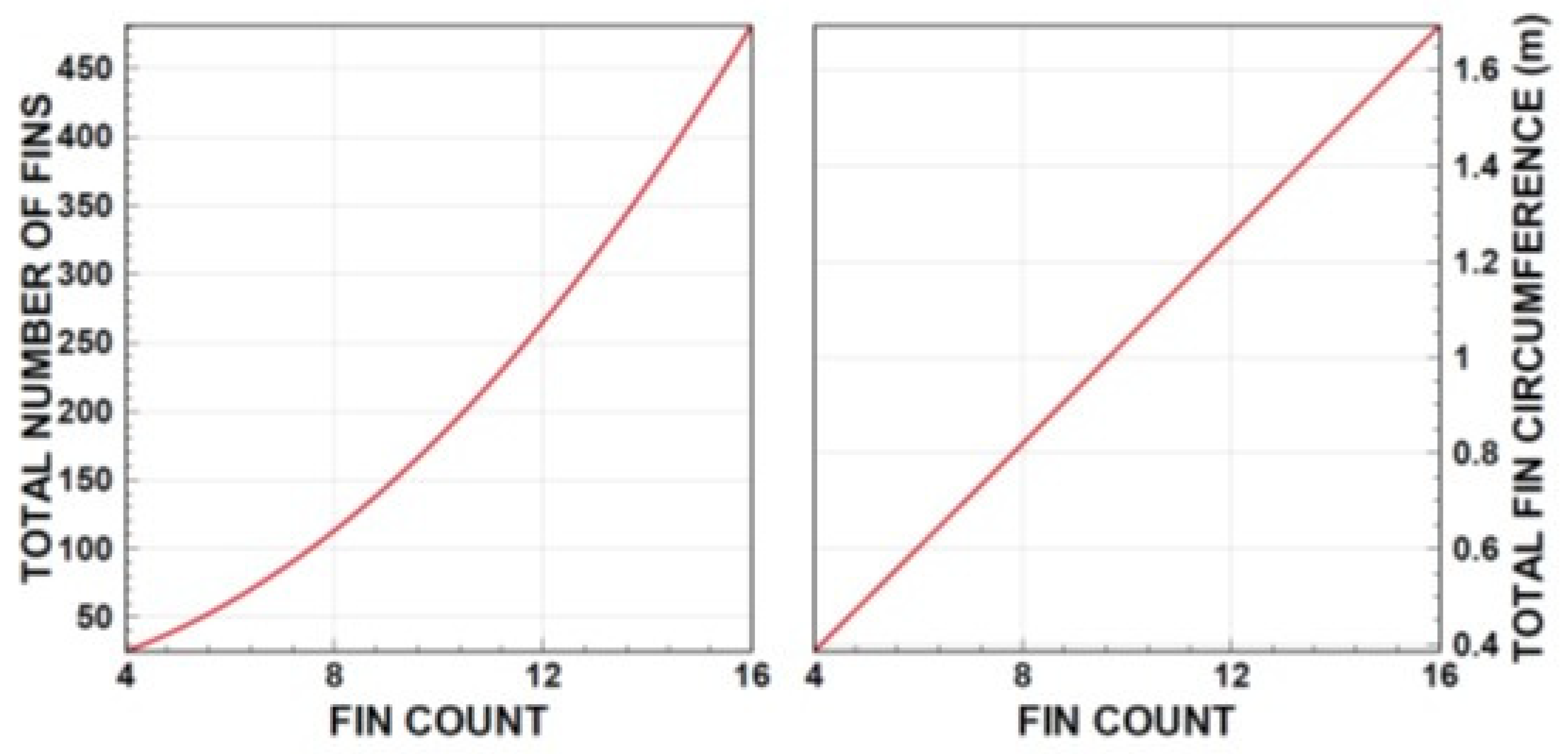

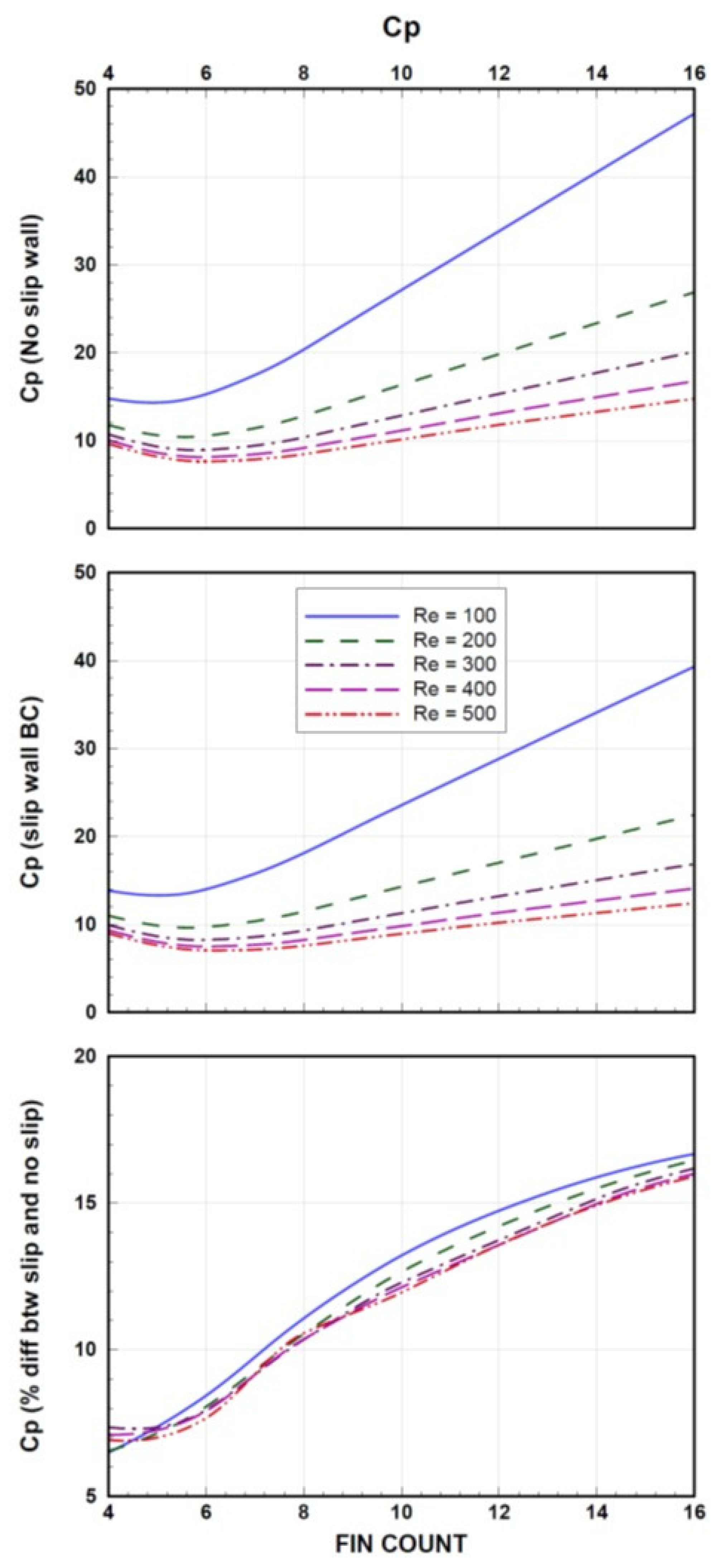
| Property | Value |
|---|---|
| Property | Value |
|---|---|
| 2700 | |
| 900 | |
| 238 |
© 2020 by the authors. Licensee MDPI, Basel, Switzerland. This article is an open access article distributed under the terms and conditions of the Creative Commons Attribution (CC BY) license (http://creativecommons.org/licenses/by/4.0/).
Share and Cite
Shuja, S.Z.; Yilbas, B.S.; Al-Qahtani, H. Influence of Hydrophobic Fin Configuration in Thermal System in Relation to Electronic Device Cooling Applications. Energies 2020, 13, 1631. https://doi.org/10.3390/en13071631
Shuja SZ, Yilbas BS, Al-Qahtani H. Influence of Hydrophobic Fin Configuration in Thermal System in Relation to Electronic Device Cooling Applications. Energies. 2020; 13(7):1631. https://doi.org/10.3390/en13071631
Chicago/Turabian StyleShuja, Shahzada Zaman, Bekir Sami Yilbas, and Hussain Al-Qahtani. 2020. "Influence of Hydrophobic Fin Configuration in Thermal System in Relation to Electronic Device Cooling Applications" Energies 13, no. 7: 1631. https://doi.org/10.3390/en13071631





